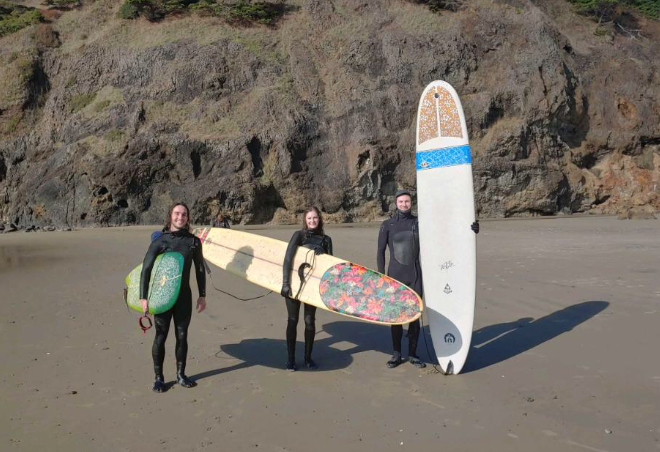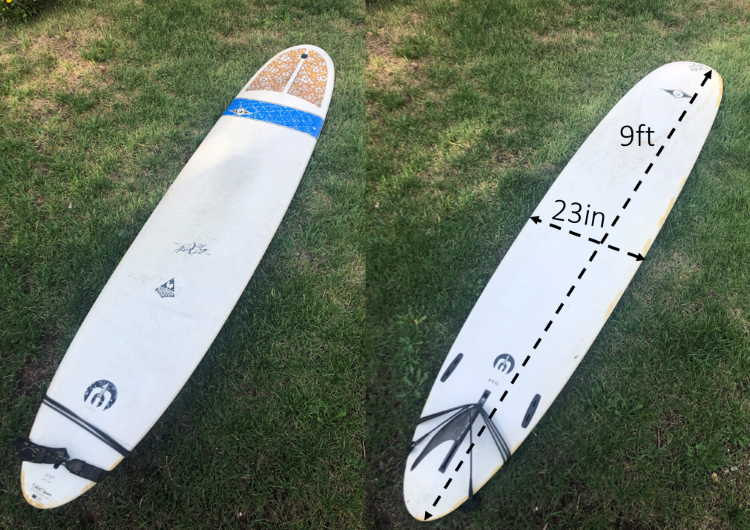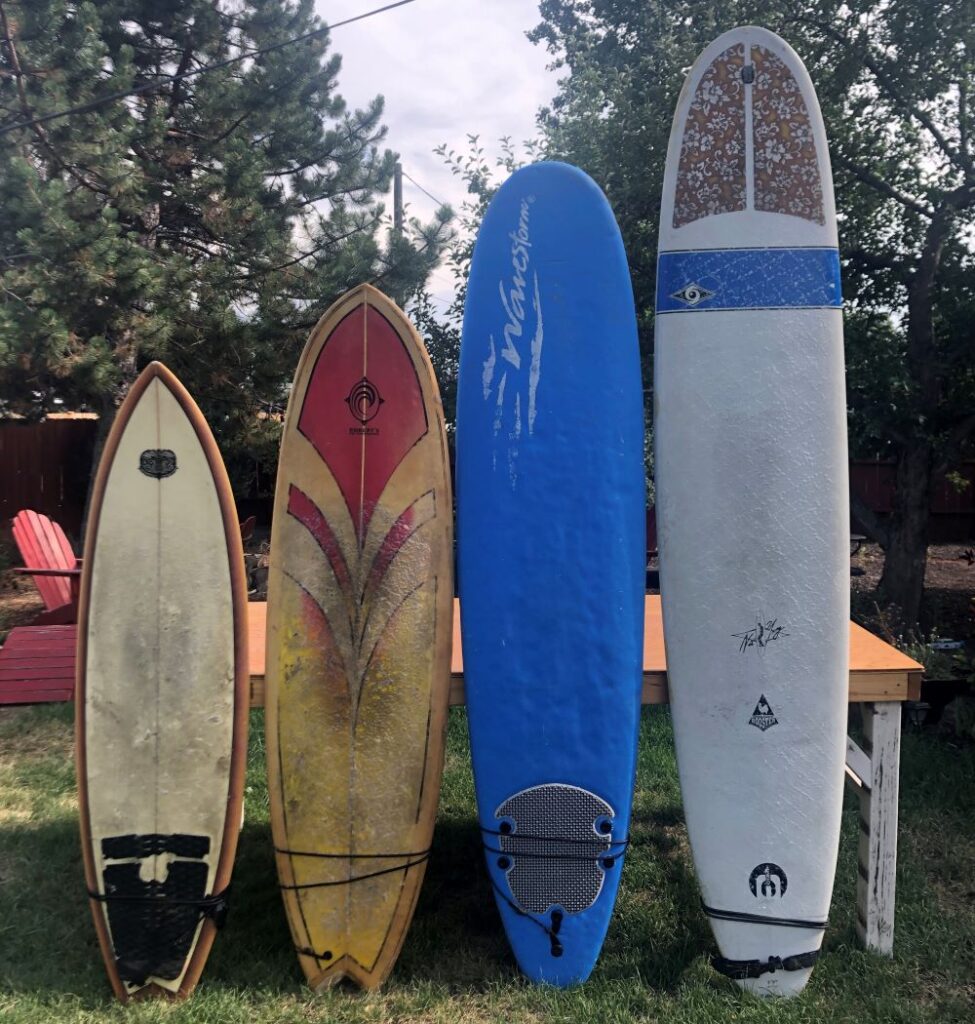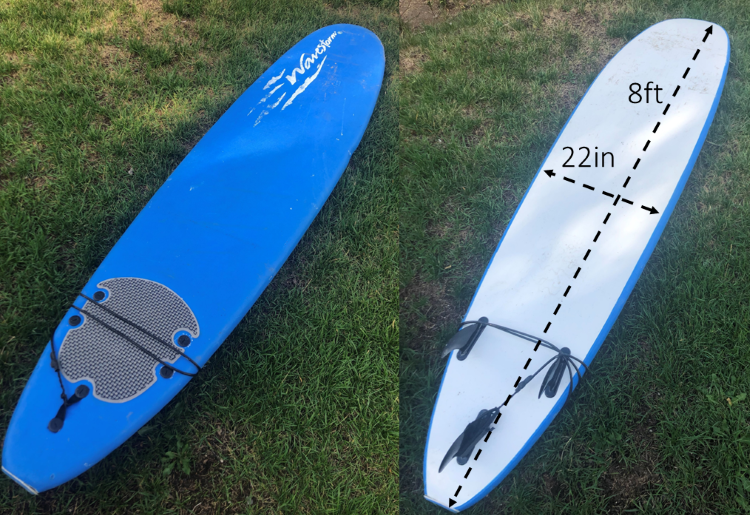There comes a point in surfing when you are ready to progress from a foam surfboard to a hard-top. Foam surfboards, or soft-tops, are ideal for learning the fundamentals of surfing.
However, they are bulky, slow, and generally harder to maneuver than a hard-top surfboard. A hard-top may be the right next step for you, but how do you know when you are ready?
In this article we’ll cover the transition from a foam surfboard to a hard-top. Afterwards, you’ll understand everything you need to know about upgrading your surfboard to a hard-top.
Are you ready for a hard-top surfboard?
As a beginner, you might be hesitant to commit to a hard-top surfboard. After all, it is a big step. Soft-top surfboards are forgiving, buoyant, and overall a great time. So, is it really worth switching from a foam surfboard to a hard-top? What is the right skill level needed to use a hard top surfboard?
It depends both on your abilities and your surfing goals! Hard tops require a bit more skill to manage and have a higher risk of injury during collisions. (Learn more about how to stay safe while surfing). However, hard-top surfboards are much more responsive than soft-tops and allow for more complex (and fun) maneuvers.
What skill level is needed for a hard-top surfboard?
You are ready to upgrade from a foam surfboard to a hard-top if you can…
- Catch and ride most (over 60%) of the waves that you paddle for
- Ride the face (unbroken section) of the wave at an angle (both left and right)
- Make basic turns
- Paddle out to the break
- Control your surfboard in the whitewater and lineup
- Understand the principles of surf etiquette
These skills are the fundamentals of surfing. If you can nail these skills down then you are ready to transition to a hard top!
Is a hard-top surfboard right for you?
However, just because you could use a hard-top surfboard, doesn’t mean you have to upgrade your foam surfboard to a hard-top! Soft-tops do have advantages, and you might be perfectly happy with a soft-top. The table below compares soft-tops and hard-tops.
| Hard-tops | Soft-tops | |
| Pros | Better performance (maneuverability) | Super durable Lower risk of injury from collision Usually more affordable No wax needed |
| Cons | May not be as durable Higher risk of injury from collision Usually more expensive | Worse performance (maneuverability) |
| Conclusion | Best for beginners who have the basics down and want to progress to the next level | Best for true beginner surfers who are learning the basics. Good for kids or older people who may have more trouble managing a board |
Soft-tops are great for true beginners learning the basics. In addition, foam boards are also great for kids and older surfers who have a harder time controlling the board in the waves. It isn’t hard to knock your surfboard into yourself and soft-tops have a lower risk for injury.

Hard tops are much more responsive than soft-tops, which feel thick and bulky in comparison. Hard-top surfboards expand your potential for turning, shifting your balance, and other maneuvers.

If you are looking to advance your surfing to the next level, go for a hard top. If you are happy where you are at, stick with a soft top!
What should you expect when transitioning to a hard-top surfboard?
Switching for a soft-top to a hard-top surfboard can feel like a big jump. It is true: a hard-top surfboard is more dangerous than a soft-top, so be honest with your abilities and don’t transition too early if you aren’t ready.
That said, when you first try a hard top you will feel several differences.
- Hard top surfboards are typically not as buoyant as soft-tops, so you will sit lower in the water
- Hard-tops generate more speed than soft-tops
- Hard-tops are more responsive and you can make turns quicker
Transition to a hard-top surfboard is exciting and will introduce new elements into your surfing. You will feel the push of the wave better and be able to engage the rails to hold a smooth and fast line down the face of the wave.
What type of hard-top surfboard is best for beginners?
If you are switching your foam surfboard to a hard-top, I recommend starting with a longboard similar to the size of the soft-top you already use. This will allow you to become acquainted with the hard-top surfboard before you downsize to a smaller board.

It is better to change the least number of variables as possible when learning how to surf. In this way, you can understand each variable (such as board material) individually and get a better feel for how that variable influences the physics of surfing.
If you are considering buying a longboard, check out the best hard-top longboards for beginners. In addition, you may want to learn more about buying a surfboard for beginners. If you’re tight on budget or not willing to spend a month’s rent on a surfboard, used surfboards are a great option to save money. I have an article about how to buy a used surfboard.
Is a PU or epoxy surfboard better?
Hard top surfboards are most commonly made of two main types of foam cores, and two main types of resins. In another article, I go into detail about the materials used for surfboards.

In brief, PU (polyurethane) boards are generally cheaper, but more fragile. Epoxy surfboards are more expensive but more durable and lighter. Don’t worry too much about these types as a beginner. Just get something that is watertight and get out there!
If you already have a hard-top but not sure what material it is, learn how to tell if your surfboard is epoxy or PU.
Should you buy a new or used hard-top surfboard?
Buying a used (second-hand) surfboard is a great option for beginners. As you may have noticed, surfboards are expensive. A used surfboard can be pretty good quality at a fraction of the retail cost. To be honest, as a beginner, you don’t need a fancy new board.
I have bought four used surfboards and each one has served me well. I wrote a whole article about how to buy a used surfboard. Make sure you check it out if you are considering a used surfboard. You need to know how to identify damage and assess a fair value.
How to try out a hard-top surfboard?
What if you are not quite ready to buy a hard-top surfboard? Don’t worry! There are ways you can try one out to see if you like it. First, look to friends and family who can lend you their board. Swapping boards with friends is a great way to get the feel for different styles. You may want to learn how to find friends to surf with.
Surf lessons primarily use foam boards as true beginners are the target audience. However, most surf shops have hard-tops for rental as well. This is a great way to get a feel for a hard top without buying one. I always think that surf lessons are worth it for beginners.
Heads up! Surfing is awesome but it can be dangerous! Learn more about how to stay safe and avoid dangers while surfing. If you are a beginner surfer, check out my other articles about surfing and my ultimate guide to learning how to surf.


![Best longboard surfboards [2023] – all skill levels surfer with surf hat](https://mindfulladventure.com/wp-content/uploads/2022/10/surf-hat-crop-1000-270x180.jpeg)




